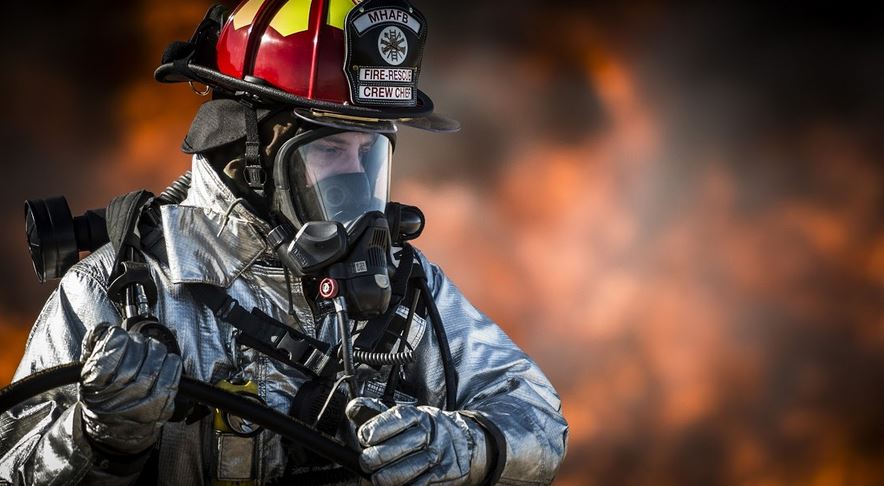Where to store fire fighting equipment? If we care about health and safety in our environment, then we undoubtedly need to be aware of what threats can occur and how to counteract them. One of the basic things that can be found in every building, regardless of whether it is a house or a restaurant, is always a first aid kit. However, very few people are aware of the need to have access to efficient fire fighting equipment, and the dangers of not having one can be devastating.
When we talk about fire protection equipment used in our home or company, we will mean fire fighting equipment that everyone is authorized to use. We do not need to be firefighters to take care of safety, for example with a fire extinguisher, fire hose or hydronetka. Our biggest concern should be whether we know where it is and how quickly we can reach it.
A simple example that should move everyone’s imagination. Just answer your question according to your conscience: if there was a fire next to me, would I know how to put it out? If the garage spilled in the garage and accidentally caught fire on a gasoline stain, is the fire equipment somewhere close? Does it have the right expiry date? Is this particular equipment suitable for putting out gasoline?
- http://www.tapsik.pl/stylizacja-paznokci-co-to-jest/
- https://hjo.com.pl/jakie-choroby-moze-leczyc-lekarz-ortopeda/
- https://www.wseia.edu.pl/jaki-material-na-plecak-worek/
Unfortunately, the saying about being wise after damage is the most up-to-date and can recall itself at the least appropriate moment. It is therefore worth knowing what fire protection equipment we should have at home or in the workplace and where we can find it.
Certainly, the basic issue is having a fire extinguisher, capable of extinguishing class A, B and C fires. Fires of glowing, liquid solids, like gasoline and volatile, like methane or propane, are the most common misfortunes in our homes. To extinguish a fire of this type, the best would be a powder extinguisher, because it can deal with each of these, while foam and CO2 extinguishers could not cope with C and A in turn. Of course, in an ideal world we would have access to every type of extinguisher in any indoors, however, we should think realistically.
When choosing firefighting equipment, ease of use should be taken into account, which is why fire extinguishers are best if they weigh up to three kilograms, so that even people with less physical strength can lift them and move them quickly to the place of fire. In the case of access to the extinguishing hose, the problem is not so big, because unwinding it is a relatively easy and even intuitive operation.
One of the more ergonomic, cheap and responsible solutions is to buy a fire blanket and then place it in some labeled cabinet. If all household members or employees know that there is a specific cabinet where there is always a blanket to extinguish, this should significantly reduce the escalation of accidents. The fiberglass fire blanket is extremely easy to use, just cover the burning object from yourself and press it to the ground. This is especially useful when you want to save a burning thing, because other fire equipment is more effective, but in return can often damage the extinguished item.
The most effective solution and the most common in the case of workplaces or public buildings is an indoor hydrant. Pressurized water is fed into the hose directly from the water supply system, which allows you to control fires that have already grown to a certain extent. The box containing such a hydrant should also be a box containing a specific fire extinguisher that would be used in the event of a rarer type of fire, impossible to extinguish by conventional methods. It is extremely important that the fire hydrant is in a lit and marked place, preferably close to the corridors.
Even distribution of fire-fighting equipment is particularly important, especially for buildings with a large surface. It would be unacceptable if someone had to run through the entire building to get a fire extinguisher and then come back with it. Powder and foam extinguishers should be located relatively evenly apart to cover the largest possible area. In the case of multi-storey buildings, it is necessary to provide each floor with a separately marked place with fire protection equipment. Otherwise, the fire could cut off a floor, which would end tragically.
The last issue, which may not seem so obvious to everyone, is to inform building users about fire-fighting equipment. While health and safety training in the workplace is obvious, everyone should know exactly where fire protection equipment is and how to use it in the apartment or single-family house. Of course, the equipment itself should also be regularly checked to see if it has accidentally been considered appropriate to move it with you only for known reasons.
Particular attention should be paid to the safety of people in their surroundings. In the case of fires we are dealing with an element so powerful and difficult to control that we cannot afford to waste time. It is necessary to remember where fire protection equipment is and how to use it. At the same time, everyone should hope that they will never find themselves in a situation where they will have to extinguish such an unexpected fire.







